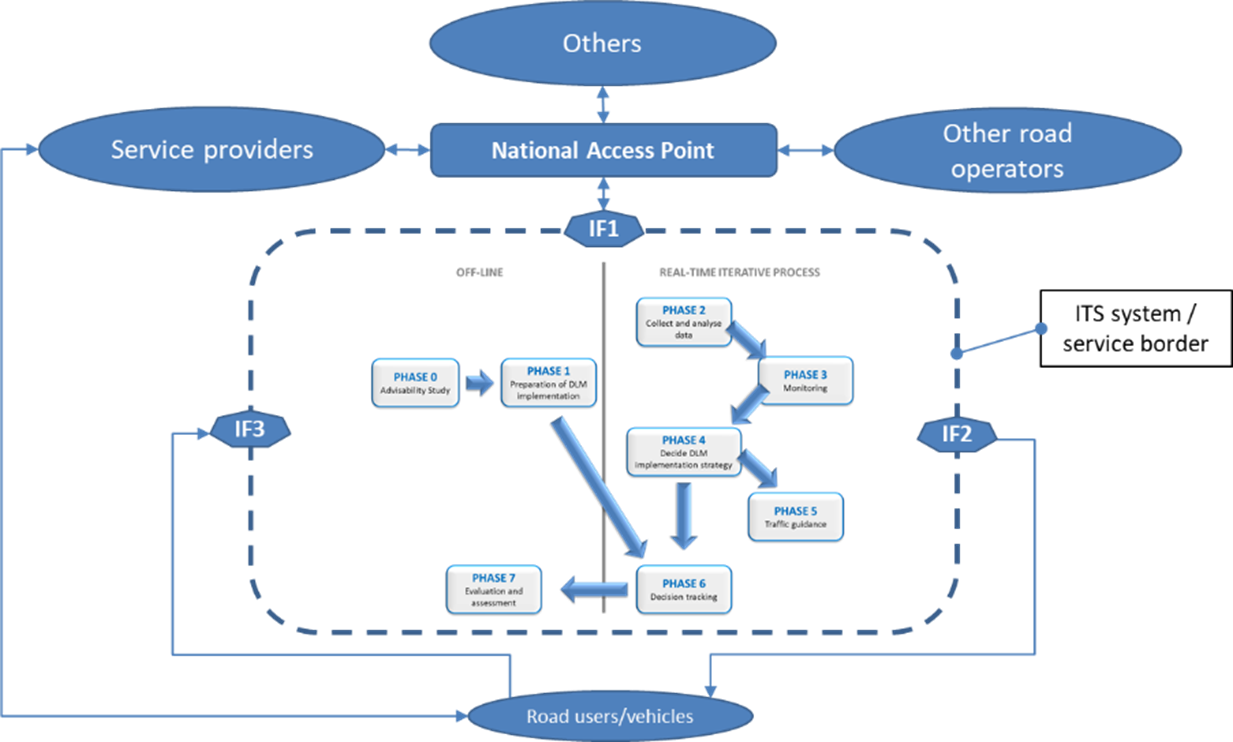EIP Recommended Service Profiles¶
Introduction¶
All ITS applications process digital data, some of them process data that is input from other systems and some produce data that needs to be sent out to other systems. This introduction describes the data sharing context of the ITS services in a technology agnostic way. These requirements reflect the regulatory context as well as the technical conditions at the time when this text was created. In subsequent parts of the document, the current technical implementation options for the interfaces will be described, based on mature technologies available for operational roll-out and also based on current relevant regulation. Note that other technical options are currently considered in the context of R&I projects, but these are not on a level of maturity yet for everyday operation. The structure for describing the data sharing context of the ITS services described in the Reference Handbook is depicted in Figure 1. The centre of the diagram represents the ITS service and its system boundary. The architecture overview is used as a symbol for this. On the service boundary – depicted by a dotted line – we see three interfaces.
Figure 1 Data sharing architecture
Interface IF1 realises a backbone interface that allows the service to communicate with other backbone systems. These may be systems of other road operators, systems of service providers for vehicle fleets or end-user apps operated inside the vehicle, or other systems. The interfaces IF2 and IF3 describe direct communication links with individual vehicles or other devices used inside the vehicle e.g. smartphones, where IF2 is the interface to convey information from the service into the vehicles, and IF3 is the reverse interface for in-vehicle data being input into the service. This opens up two ways of sharing data with vehicles, via the immediate links (sometimes referred to as ‘short leg’) or via a backbone interface to the backbone of a fleet operator who has himself a link into the vehicles belonging to this fleet (‘long leg’). As stated above, the description so far was technology agnostic. In order to do actual implementations of the service, concrete technologies have to be selected to implement these interfaces. The requirements presented in this document will provide the required choices regarding technologies and data profiles. The requirements with regard to IF1 are mainly governed by the Delegated Regulations published by the European Commission in the scope of the ITS Directive. These stipulate the use of National Access points and the application of DATEX II standard (CEN 16157 series) for data encoding.
The EU EIP A2 Reference Handbook ITS Services that have an RSP defined can be accessed below.
Documentation¶
For now only documentation on the ‘Road Weather Information’ is available. All other documentation will follow shortly. You can get the Recommended Service Profiles at the DATEX II Webtool.
Forecast and Realtime Event Information
Traffic Condition and Travel Time Information
Multi-Modal Traveller Information
Incident Warning and Management
